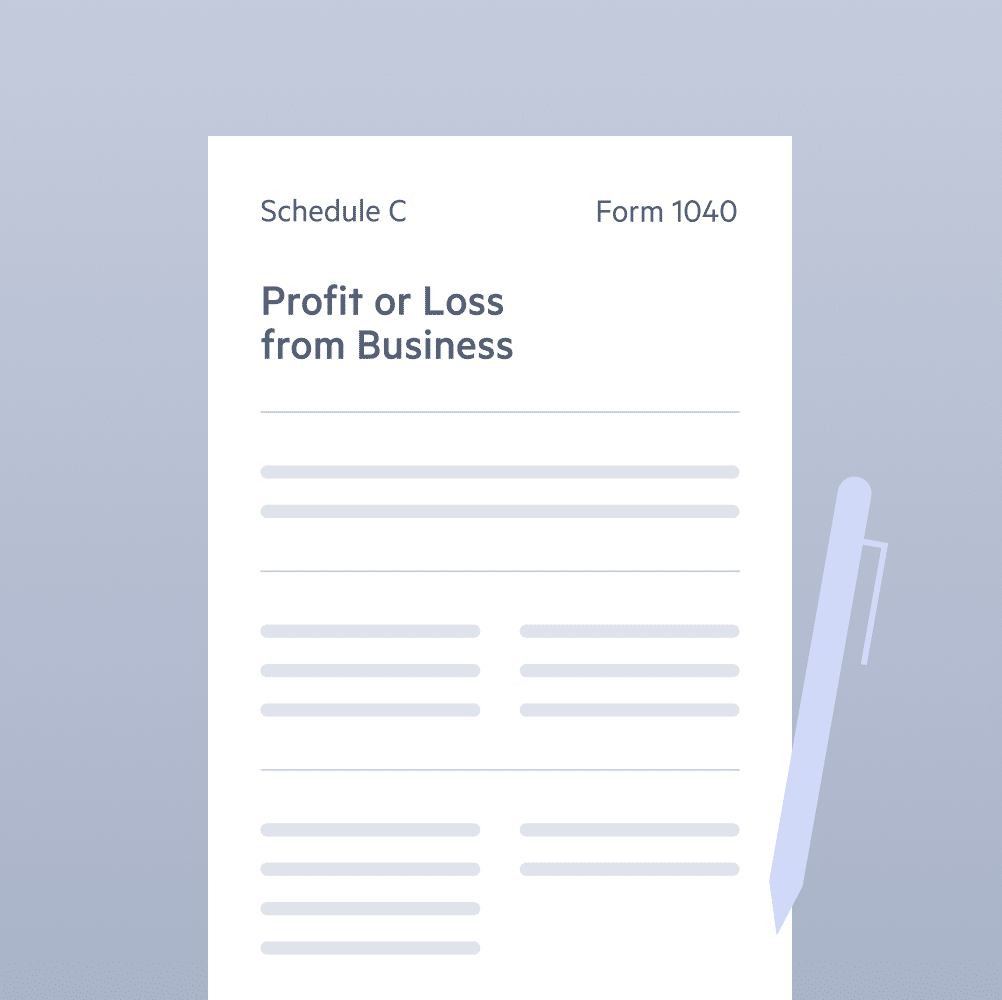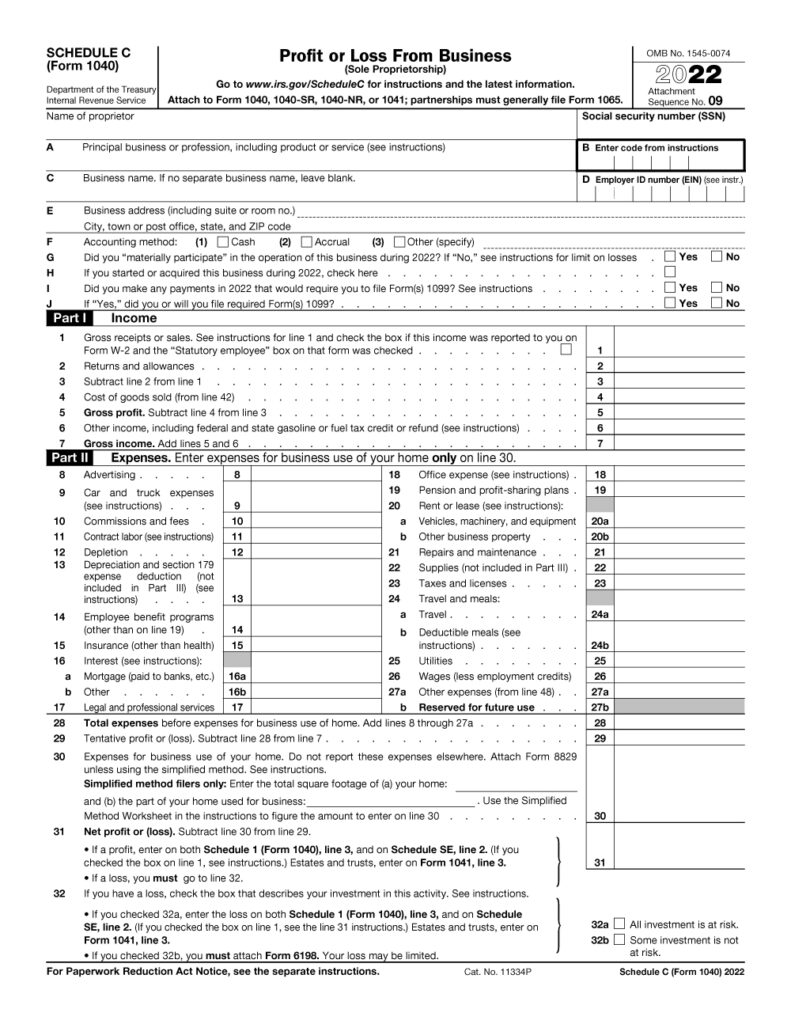Fill in some basic personal information.
Special discount: Get 30 days free plus 40% off Lili Smart fee for 3 months
Get 40% off Lili Smart fee for 3 months
Special discount: Get 30 days free plus 40% off Lili Smart fee for 3 months
Get 40% off Lili Smart fee for 3 months
When the new year rolls around, the Internal Revenue Service (IRS) expects you to file your tax return. Depending on the type of business you operate, there are different forms you’ll need to file along with your return.
If you earn income as a sole proprietor or single-member LLC, you’ll need to file a Schedule C tax form (Form 1040), Profit or Loss from Business, to report business income and expenses.
Find out what you need to know about Schedule C, including what’s on it, how to fill it out, and when to file it. And, we’ll answer some common questions at the end of this guide.

A Schedule C is an IRS form you use to report the profits or losses you make from your business during the tax year.
The form includes information about your other income, credits, and deductions to calculate total taxable income and any additional tax you owe.
Here’s what Schedule C (Form 1040) looks like:

If you’re self-employed and earn an income as a sole proprietor or through a single-owner LLC, you must fill out a Schedule C form when filing your annual tax return.
The IRS qualifies your activity as a business if:
Examples of individuals who will file Schedule C include:
Your business clients likely will send you a Form 1099-MISC or Form 1099-NEC, which reports the amounts they paid you for the tax year.
Remember that all of your business income is reportable and taxable. So even if you don’t receive 1099s from your customers, you still need to report the income.
And if you paid any contractors or vendors through your business, you may also need to send 1099s to them, and include these and other eligible business expenses on your Schedule C.
Whether you’re filling out a Schedule C form for the first or 30th time, getting all the information and records you need early is always a good idea to prepare and file your return faster.
Below is a breakdown of each step necessary to fill out Schedule C, starting with the structure of the form, the information included, and what to include in each section.
The IRS Schedule C tax form is split into:
Before filling out and filing your Schedule C, you’ll need the following documents:

With Lili, categorizing your expenses is quick and painless. And, when tax season rolls around, Lili generates a prefilled Schedule C form based on what you’ve already categorized, so you can save time and money during tax prep!
Avoid the headache next tax season and sign up with Lili today.
Below is a detailed breakdown of the information you need to fill out in each section of the Schedule C tax form.
Source: IRS.gov
In this first section, you include details about your business.
If you’re operating as a sole proprietor, you’ll enter your name on the top line labeled name of proprietor. And you’ll include your Social Security Number next to your name.
The other parts of this section are:
Source: IRS.gov
In this section, you’ll tally your business income and report the cost of goods sold (COGS) to calculate gross income. Gross income generally includes income from any source.
The IRS expects you to report income from all sources, with few exceptions.
Other types of income you must report include:
Here’s what you’ll report line by line in Part I: Income:
Source: IRS.gov
Here, you’ll add up all your business expenses and deduct them from gross income to get your net profit or loss. This figure will go on your Form 1040 income tax return.
You can write off a wide range of expenses paid during the year, from supplies to commissions, advertising costs, legal fees, and repairs and maintenance.
Some highlights of this section include the following:
Include details of any expenses you included on Line 27a in Part V: Other Expenses of Schedule C.
Source: IRS.gov
This part is for businesses that sell goods to customers. If you operate a service-based business, this section won’t apply.
You’ll report your:
Deduct the value of your closing inventory from that total to get your COGS, and enter that amount in Part I to reduce gross income.
Here’s what to enter:
Source: IRS.gov
In this section, you’ll enter information about the vehicles you deduct expenses for in Part II. The IRS will use this information to review your vehicle deduction and determine its legitimacy.
You must keep real-time records of all use of a personal vehicle for business purposes. The records must include the date and purpose of the trip, total round trip mileage, and the name of the client or supplier visited.
Source: IRS.gov
This last section is to detail the expenses you included in Line 27a. List and report the total of these expenses, which include things like:
Note: If you’re filing a Schedule C tax form for 2024, make sure you do that by the April 15, 2025 deadline.
Accurately summarizing your income and deductions can be difficult and time-consuming, and completing a Schedule C form is just one more task that needs to be completed during tax season.
With Lili’s Tax Preparation software, you’ll receive a prefilled Schedule C form based on the expenses you’ve already categorized using the Lili platform, which you can use to file your taxes with the IRS quickly and painlessly. No need to deal with filling out another tax form, or pay even more money to a CPA to prepare the form out for you. Save yourself time and money next tax season and sign up with Lili today!
A sole proprietorship is an unincorporated business that you own and run yourself.
Take a quick tour of the tools inside the Lili account. Banking, bookkeeping, invoicing, and taxes, all in one place.